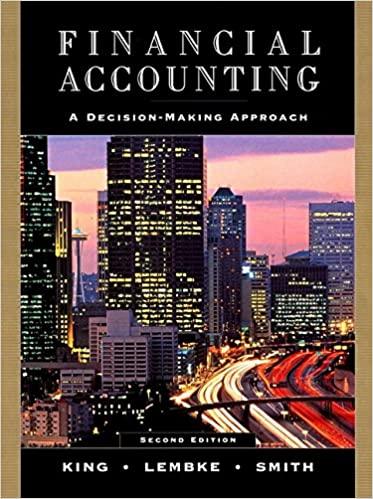


Brissett Corporation makes three products that use the current constraint, which is a particular type of machine. Data concerning those products appear below: Selling price per unit Variable cost per unit Time on the constraint (minutes) GK $ 326.21 $ 252.00 3.50 LQ $ 543.47 $ 420.81 7.50 $ 504.00 $ 397.66 8.00 Required: a. Rank the products in order of their current profitability from the most profitable to the least profitable. In other words, rank the products in the order in which they should be emphasized. b. Assume that sufficient constraint time is available to satisfy demand for all but the least profitable product. Up to how much should the company be willing to pay to acquire more of the constrained resource? (Round your answer to 2 decimal places.) Ranking a. GK a. LQ a. XK b. Maximum amount Farrugia Corporation produces two intermediate products, A and B, from a common input. Intermediate product A can be further processed into Product X. Intermediate product B can be further processed into Product Y. The common input is purchased in batches that cost $54 each and the cost of processing a batch to produce intermediate products A and B is $22. Intermediate product A can be sold as is for $36 or processed further for $22 to make Product X that is sold for $49. Intermediate product B can be sold as is for $79 or processed further for $44 to make Product Y that is sold for $98. Required: a. Assuming that no other costs are involved in processing the common input or in selling products, what is the profit (loss) from processing one batch of the common input into the products X and Y? b. What is the Financial advantage (disadvantage) from further processing? Should each of the intermediate products, A and B, be sold as is or processed further? Complete this question by entering your answers in the tabs below. Required A Required B Assuming that no other costs are involved in processing the common input or in selling products, what is the profit (loss) from processing one batch of the common input into the products X and Y? Required A Required B > Required A Required B What is the Financial advantage (disadvantage) from further processing? Should each of the intermediate products, A and B, be sold as is or processed further? (Negative amounts should be indicated by a minus sign.) Product X Product Y Financial advantage (disadvantage) from further processing Should each of the intermediate products, A and B, be sold as is or processed further?









